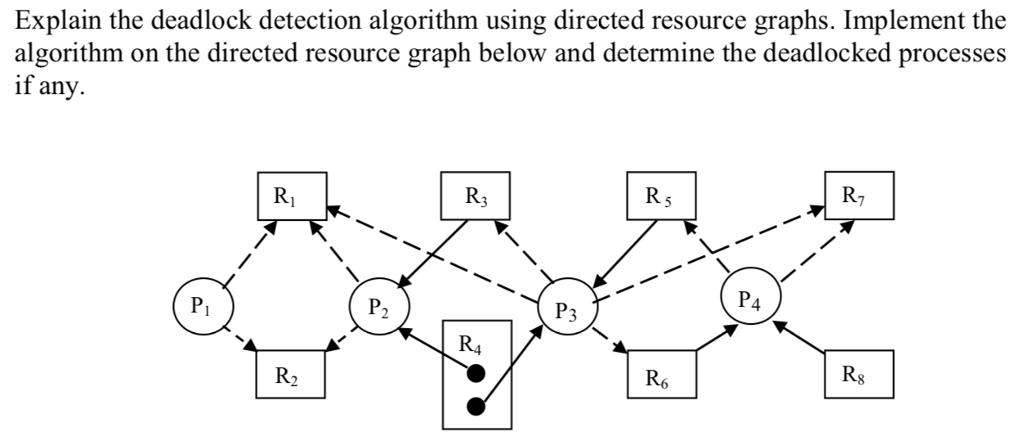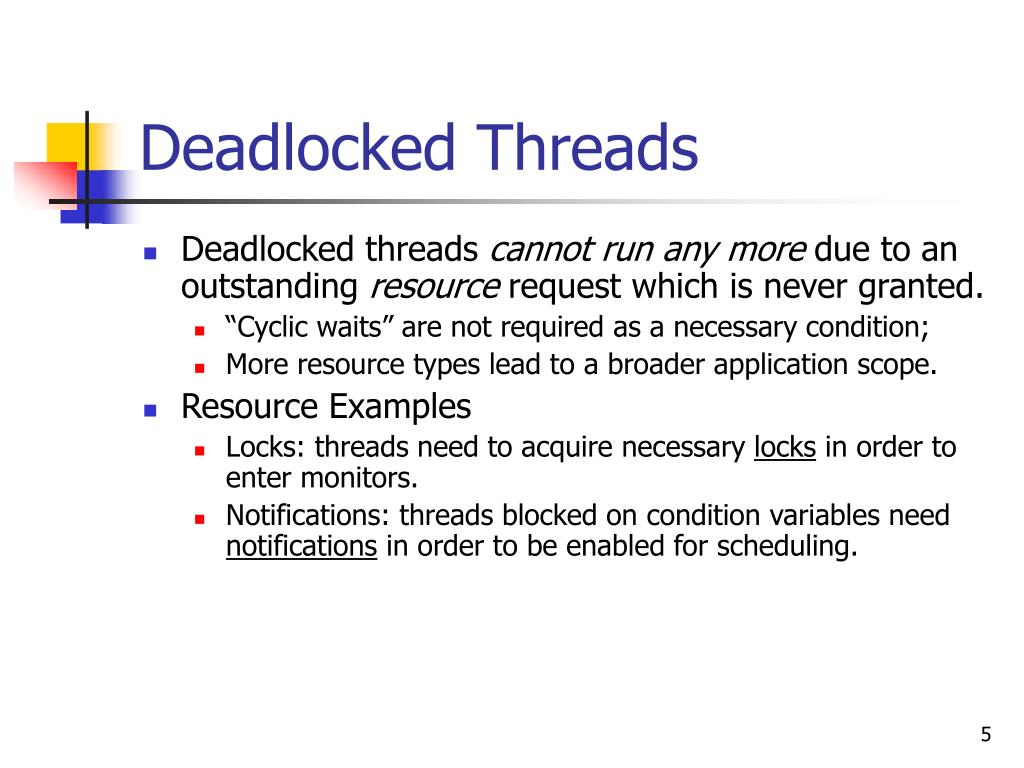


Deadlock programming pdf#
The task() function that attempts to acquire the same lock twice and trigger a deadlock is listed below.ĭownload my FREE PDF cheat sheet Deadlock 2: Threads Waiting on Each OtherĪnother common deadlock is to have two (or more) threads waiting on each other.įor example Thread A is waiting on Thread B, and Thread B is waiting on Thread A. This will cause a deadlock as the thread already holds the lock and will wait forever for itself to release the lock so that it can acquire it again. That is, the task will acquire the lock, then attempt to acquire the lock again. In this case we will develop a task() function that directly attempts to acquire the same mutex lock twice. We can demonstrate a deadlock caused by a thread waiting on itself. This situation is detected and a RuntimeError is raised. One example that cannot occur is that a thread cannot explicitly wait for itself to terminate with a call to join(). Waiting for a semaphore to be released by itself.Waiting for an event to be set by itself.Waiting to be notified on a condition by itself.Waiting to acquire a mutex lock that it has already acquired.
Deadlock programming series#
Instead, this occurs accidentally due to a series of function calls and variables being passed around.Ī thread may wait on itself for many reasons, such as:
Deadlock programming code#
we don’t intentionally write code that causes a thread to wait on itself. We do not intend for this deadlock to occur, e.g. Run your loops using all CPUs, download my FREE book to learn how.Ī common cause of a deadlock is a thread that waits on itself. Now that we are familiar with what a deadlock is, let’s look at some worked examples. This will help you identify deadlocks in your own code and trace down the causes of those deadlocks that you may encounter. It is important to develop an intuition for the causes of different deadlocks. fail to perform lock ordering).ĭeadlocks may be easy to describe, but hard to detect in an application just from reading code. Threads that acquire mutex locks in different orders (e.g.mutex lock, semaphore, barrier, condition, event, etc.). Thread that fails to release a resource (e.g.attempts to acquire the same mutex lock twice). There are many ways in which you may encounter a deadlock in your concurrent program.ĭeadlocks are not developed intentionally, instead, they are an unexpected side effect or bug in concurrency programming.Ĭommon examples of the cause of threading deadlocks include: The result is that the deadlock threads are unable to progress and the program is stuck or frozen and must be terminated forcefully. Deadlock 3: Acquiring Locks in the Wrong OrderĪ deadlock is a concurrency failure mode where a thread or threads wait for a condition that never occurs.Deadlock 2: Threads Waiting on Each Other.


 0 kommentar(er)
0 kommentar(er)
